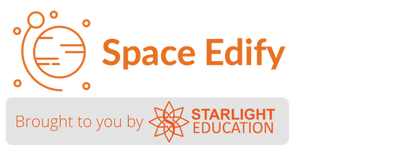
Charles ‘Sam’ Gemar
Meet the incredible Sam Douglas Gemar, a true space adventurer and former NASA astronaut. Born on August 2, 1943. Before soaring into the cosmos, he displayed bravery as a combat helicopter pilot in the U.S. Army.
Selected as an astronaut in 1979, Gemar embarked on three thrilling Space Shuttle missions, each filled with excitement and discovery. From top-secret missions to deploying satellites and conducting experiments, Sam’s space odyssey is a captivating tale of courage and scientific exploration. With over 580 hours in space, Gemar is not just an astronaut but a real-life hero inspiring young minds to reach for the stars and explore the mysteries of the universe. Get ready to be inspired by the cosmic adventures of Sam Gemar!
STS-38 (Atlantis): This mission took place from November 15 to 20, 1990. It was a classified Department of Defense mission, so many details about the objectives were not publicly disclosed.
STS-48 (Discovery): Sam Gemar flew on Discovery from September 12 to 18, 1991. The mission deployed the Upper Atmosphere Research Satellite (UARS) and conducted various scientific experiments.
STS-62 (Columbia): His third mission, STS-62, occurred from March 4 to 18, 1994. This mission focused on scientific experiments in the United States Microgravity Laboratory-2 (USML-2).
Kathryn Thornton
Kathryn Ryan Cordell Thornton, born on August 17, 1952, is a distinguished American scientist and a four-time NASA Astronaut, renowned for her remarkable contributions to space exploration. With an impressive career spanning both academia and space missions, Thornton has left an indelible mark on the scientific community.
Throughout her illustrious tenure with NASA, Thornton has accumulated over 975 hours in space, including an impressive 21 hours dedicated to extravehicular activities, showcasing her expertise and commitment to pushing the boundaries of space exploration. She has been an integral part of several pivotal missions aboard the Space Shuttle Discovery and the Space Shuttle Endeavour, including STS-33, STS-48, and STS-62, where her contributions were instrumental in advancing our understanding of space and technology.
Beyond her remarkable achievements in space, Thornton has also made significant contributions to academia. She served as the associate dean for graduate programs at the University of Virginia School of Engineering and Applied Science, where she played a pivotal role in shaping the future of engineering education. Currently, she holds the esteemed position of professor of mechanical and aerospace engineering, where she continues to inspire and mentor the next generation of aspiring engineers.
Thornton’s academic journey is rooted in her passion for engineering and aerospace. Armed with a solid educational background in both fields, she has consistently demonstrated a profound understanding of complex scientific principles, earning her the respect and admiration of her peers.
In recognition of her exceptional contributions to space exploration, Thornton has been bestowed with numerous awards and honors, including induction into the United States Astronaut Hall of Fame, cementing her legacy as a trailblazer in the field of space science.
Kathryn Ryan Cordell Thornton’s unwavering dedication to advancing scientific knowledge and her pioneering spirit continue to inspire generations of scientists and engineers, leaving an enduring legacy that reaches far beyond the bounds of our planet.
Charlotte Pouwels
Charlotte Pouwels is a physicist, Galileo Satellite system engineer, and public speaker. She is also the CTO of ICEE.Space and an advocate for Women in STEAM. In 2019, she participated in the ESA EuroMoonMars EMMIHS-II mission at HI-SEAS in Hawaii, where she became an analog astronaut. In 2021, Charlotte co-founded ICEE.Space, a company dedicated to conducting analog missions worldwide and making space accessible to all.
One of the company’s main projects is CHILL-ICE, an analog mission focused on testing prototype space habitats and suits. The mission, which takes place in Iceland, involves setting up a deployable habitat inside a Lava Tube within an 8-hour extravehicular activity (EVA) timeframe, simulating emergency situations on the Moon.
From 2020 to 2021, Charlotte worked as a test engineer for Airbus Defence & Space in the Netherlands. With providing guest lecturers and keynotes, she received the 3rd place in the ESA Champion 2021 public speaking and top 100 Women to follow on LinkedIn. In 2022, she embarked on a new journey as a Galileo Security system engineer for the European Union Space Programme Agency (EUSPA) in Prague, representing CGI. In parallel Charlotte obtained a Masters degree at the International Space University and conducted research on utilizing Augmented Reality Heads-In Displays in the next generation of space suits.

